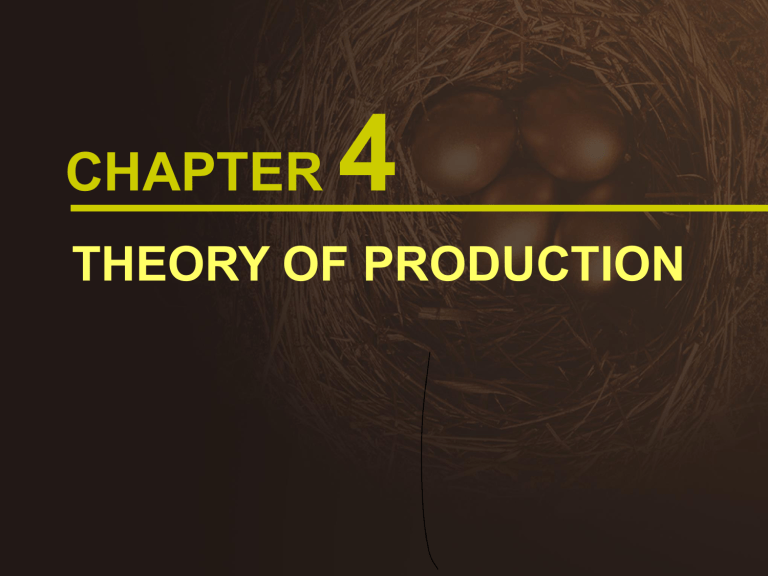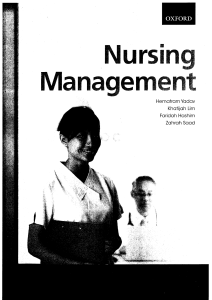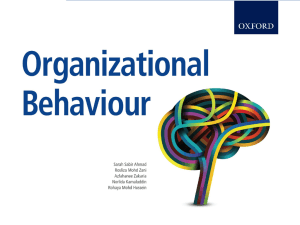
CHAPTER 4 THEORY OF PRODUCTION Principles of Economics second edition © Oxford Fajar Sdn. Bhd. (008974-T) 2010 All Rights Reserved Ch. 5: 1 Topic Learning Outcomes Define production. Explain stages of production. Differentiate between fixed factor & variable factor. Differentiate between short-run & long-run. Define the Law of Diminishing Marginal Returns (LDMR). Calculate TP, AP & MP. Sketch TP, AP & MP curve. Explain relationship between TP, MP & AP. Explain the Law of Returns to Scale Principles of Economics second edition © Oxford Fajar Sdn. Bhd. (008974-T) 2010 All Rights Reserved Ch. 5: 2 DEFINITION OF PRODUCTION Definition ▪ Production means the process of using the factor of production to produce goods and services. ▪ Production is the process of transforming inputs into outputs. OUTPUTS INPUTS Inputs refers to the factors of production that a firm use in the production process. Principles of Economics second edition © Oxford Fajar Sdn. Bhd. (008974-T) 2010 Processing Refers to what we get at the end of the production process that is finished products. All Rights Reserved Ch. 5: 3 LAND LABOUR All natural resources or gift of nature Physical or mental activities of human beings CLASSIFICATION OF FACTORS OF PRODUCTION CAPITAL Part of man-made wealth used for further production Principles of Economics second edition © Oxford Fajar Sdn. Bhd. (008974-T) 2010 ENTREPRENEUR A person who combines the different factors of production, and initiates the process of production and also bears the risk All Rights Reserved Ch. 5: 4 Business that operate at the Primary stage of production: Take raw materials (natural resources) from the land, water or air All products go through this as the 1st Stage of Production Business that operate at the Secondary stage of production: Manufacture the raw materials (natural resources) into finished products Most products go through this as the 2nd Stage of Production Business that operate at the Tertiary stage of production: Provide products and services to consumers, governments and other businesses Some products and most services go through this as the 3rd Stage of Production Principles of Economics second edition © Oxford Fajar Sdn. Bhd. (008974-T) 2010 All Rights Reserved Ch. 5: 9 Primary Secondary Tertiary SHORT RUN AND LONG RUN PRODUCTION FUNCTION Two Types of Factor Inputs 1. Fixed Input An input which the quantity does not change according to the amount of output. Example: Machinery, land, buildings, tools, equipments, etc. 2. Variable Input An input which the quantity changes according to the amount of output. Example: Raw materials, electricity, fuel, transportation, communication, etc. Short Run and Long Run Period Short run period is the time frame, which at least one of the inputs (factor of production) is fixed and other inputs can be varied. Long run period is the time frame which all inputs are variable. Principles of Economics second edition © Oxford Fajar Sdn. Bhd. (008974-T) 2010 All Rights Reserved Ch. 5: 13 Short-run vs Long-run Fixed input + Variable input = Short-run All variable input = Long-run Land + Labour + Capital + Entrepreneur F V F V SR Land + Labour + Capital + Entrepreneur V V Principles of Economics second edition © Oxford Fajar Sdn. Bhd. (008974-T) 2010 V V LR All Rights Reserved Ch. 5: 14 SHORT RUN PRODUCTION FUNCTION (cont.) LAW OF DIMINISHING MARGINAL RETURNS It states that if the quantities of certain factors are increased while the quantities of one or more factors are held constant, beyond a certain level of production, the rate of increase in output will decrease. OR “Law of diminishing marginal returns states that as more of a variable input is used while other input and technology are fixed, the marginal product of the variable input will eventually decline”. Principles of Economics second edition © Oxford Fajar Sdn. Bhd. (008974-T) 2010 All Rights Reserved Ch. 5: 15 SHORT RUN PRODUCTION FUNCTION (cont.) TOTAL PRODUCT (TP) The amount of output produced when a given amount of that input is used along with fixed inputs. AVERAGE PRODUCT (AP) Divide the total product by the amount of that input used in the production Average Product (APL) = Total Product Total Labour APL = TP/ L Principles of Economics second edition © Oxford Fajar Sdn. Bhd. (008974-T) 2010 All Rights Reserved Ch. 5: 17 SHORT RUN PRODUCTION FUNCTION (cont.) MARGINAL PRODUCT (MP) Change in the total product of that input corresponding to an addition unit change in its labour assuming other factors that is capital fixed. Marginal Product (MPL) = Change in Total Product Change in Total Labour MPL Principles of Economics second edition © Oxford Fajar Sdn. Bhd. (008974-T) 2010 = TP/ L All Rights Reserved Ch. 5: 18 Previously… Labour = 1 TP = 8 20 8 12 2 1 1 10 12 Now… Labour = 2 MP = 12 TP = ? AP = ? Previously… Labour = 6 TP = 54 56 54 2 7 6 1 8 2 Now… Labour = 7 MP = ? TP = ? AP = 8 SHORT RUN PRODUCTION FUNCTION (cont.) Capital (Fixed input) Labour (Variable input) Total Product Marginal Product Average Product 10 0 0 0 0 10 10 10 10 10 10 10 10 10 10 1 2 3 4 5 6 7 8 9 10 8 20 33 44 50 54 56 56 54 50 8 12 13 11 6 4 2 0 -2 -4 8 10 11 11 10 9 8 7 6 5 MP = 54 - 56 9-8 = -2 Principles of Economics second edition © Oxford Fajar Sdn. Bhd. (008974-T) 2010 Stages of Production STAGE I STAGE II STAGE III AP = 56 8 = 7 All Rights Reserved Ch. 5: 21 SHORT RUN PRODUCTION FUNCTION (cont.) RELATIONSHIP BETWEEN TP AND MP When MP is increasing, TP increase at an increasing rate. When MP is decreasing, TP increase at a decreasing rate. When MP is zero, TP at its maximum. When MP is negative, TP declines. 60 RELATIONSHIP BETWEEN AP AND MP When MP is above AP , AP is increasing When MP is below AP, AP is decreasing. When MP equals to AP, AP is at maximum. TP MAX STAGE II STAGE I STAGE III 50 40 TP 30 MP 20 AP MAX; AP =MP AP 10 MP=0 0 1 2 3 4 5 6 7 8 9 10 -10 Principles of Economics second edition © Oxford Fajar Sdn. Bhd. (008974-T) 2010 All Rights Reserved Ch. 5: 22 SHORT RUN PRODUCTION FUNCTION (cont.) Stage I Stage II ▪ Proportion of fixed factors are greater than variable factors ▪ Under utilization of fixed factor ▪ Operation involves a waste of resources ▪ Called law of diminishing returns ▪ The most efficient stage of production because the combinations of inputs are fully utilized STAGES OF PRODUCTION Stage III ▪ Proportion of fixed factors is lower than variable factors ▪ Increase in variable factors decline the TP because of overcrowding ▪ A producer would not like to operate at this stage Principles of Economics second edition © Oxford Fajar Sdn. Bhd. (008974-T) 2010 All Rights Reserved Ch. 5: 23 There are three stages of returns to scale: Increasing Returns to Scale (economies of scale); whereby an increase in inputs will bring about a more than proportionate increase in the level of output. Constant Returns to Scale (constant economies of scale); whereby an increase in input will bring about a proportionate increase in the level of output. Decreasing Returns to Scale (diseconomies of scale); whereby an increase in input will bring about a less than proportionate increase in the level of output. Division of labour Marketing Internal EOS Risk Bearing Financial Infrastructure Concentration External EOS Information Marketing Bureaucratic problems High competition Internal DEOS High cost to maintain professional Division of labour Social problems External DEOS Intense competition Wage differential




